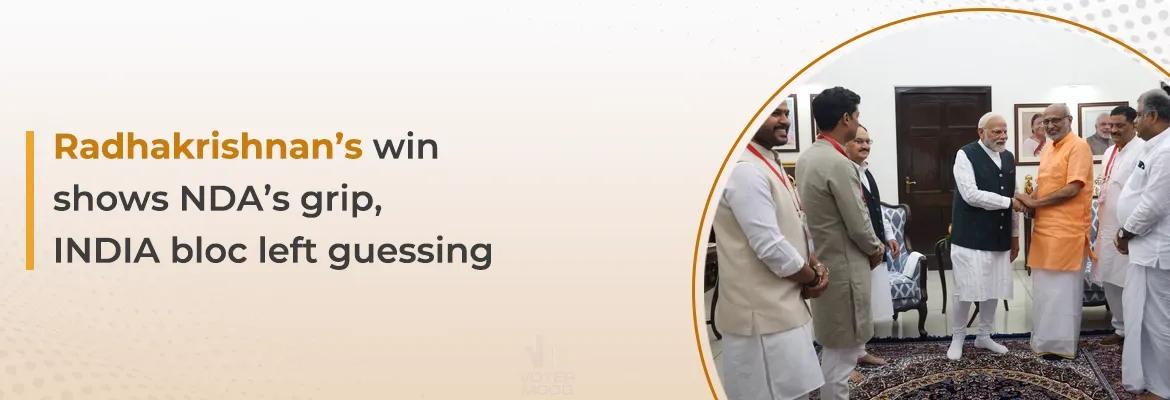Radhakrishnan’s win shows NDA’s grip, INDIA bloc left guessing

The outcome of the Vice President election is being seen as a setback for the INDIA bloc, which was hoping to narrow the gap or even gain from cross-voting & has given the perception that the alliance members may not be as united as they seem to be.
Numbers speak louder than expectations
Radhakrishnan received 452 votes, while Sudarshan Reddy managed 300 votes. Based on the current strength in Parliament, the NDA commands 427 votes, whereas the INDIA bloc had 315 votes on paper. The INDIA bloc’s tally fell short by 15 votes, indicating possible cross-voting or abstentions within its ranks.
Interestingly, this margin of victory 152 votes is the second narrowest in recent memory. In 2002, VP candidate Bhairon Singh Shekhawat had defeated Congress leader Sushil Kumar Shinde by 149 votes.
Suspense over cross voting
According to the Rajya Sabha Secretariat, 781 MPs were part of the electoral process. Of these, 767 cast their votes, 15 were declared invalid, and 14 MPs abstained. The abstentions came from the Biju Janata Dal (7 MPs), Bharat Rashtra Samithi (4 MPs), Shiromani Akali Dal (1 MP), and two Independents from Punjab.
While the INDIA bloc had placed its hopes on some NDA MPs voting on their “antaraatma ki awaaz”, it appears that the reverse has occurred, with some INDIA bloc members possibly drifting away.
Political message of the mandate
The results underline two clear trends: the BJP leadership’s continuing firm grip over the NDA alliance, and the INDIA bloc’s struggle to hold its flock together. Despite speculation of a close contest, Radhakrishnan’s victory margin has reaffirmed NDA’s political dominance in Parliament.
As analysts suggest, the outcome not only highlights the discipline within the ruling alliance but also serves as a reality check for the INDIA bloc ahead of future contests.
The result has led to the quiet death of the perception that there was some happiness among NDA partners or within the ranks and file of the BJP.


